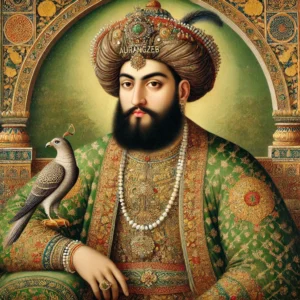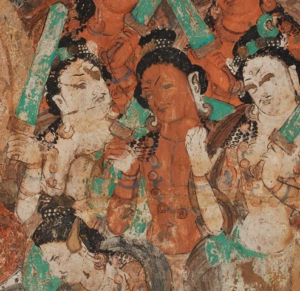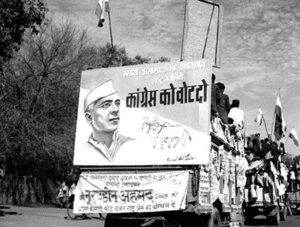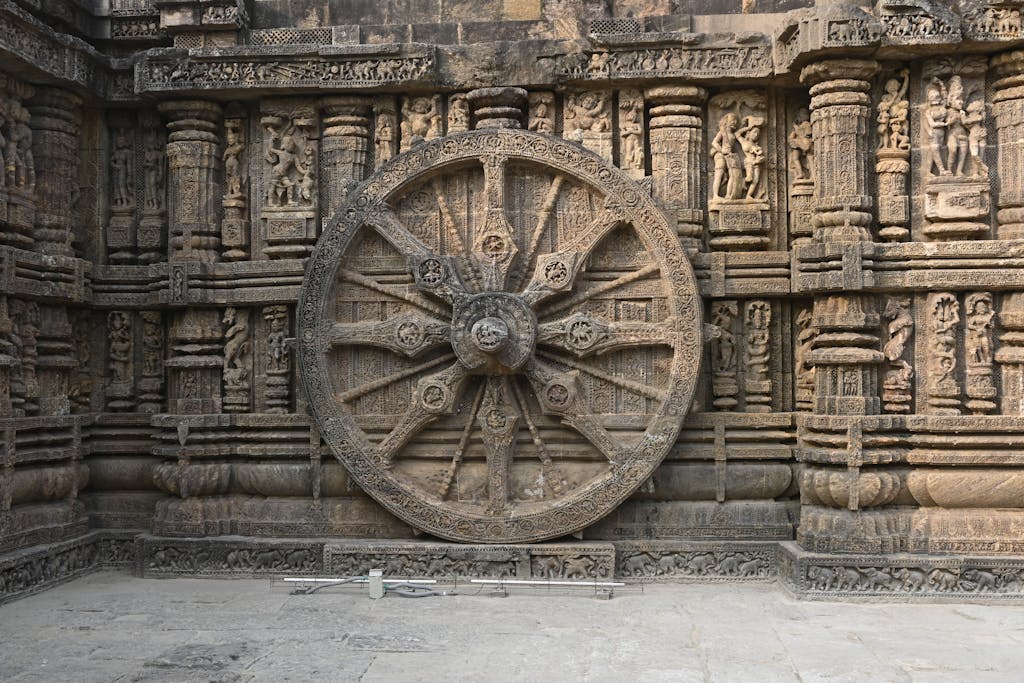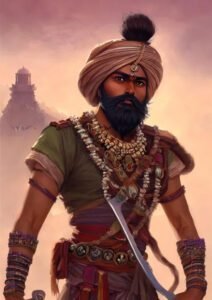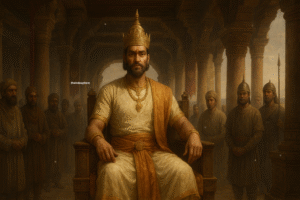The Eternal Legacy of Hampi: A City Carved in Time
Hampi, a UNESCO World Heritage Site located in the southern Indian state of Karnataka, is an archaeological treasure trove that stands as a testament to the grandeur and artistic prowess of the Vijayanagara Empire. Situated on the banks of the Tungabhadra River, Hampi was once the flourishing capital of this empire, renowned for its wealth, architectural marvels, and cultural vibrancy. The city’s ruins, spread across a vast expanse, continue to draw historians, archaeologists, and tourists alike, all eager to delve into the rich culture & history of its past.
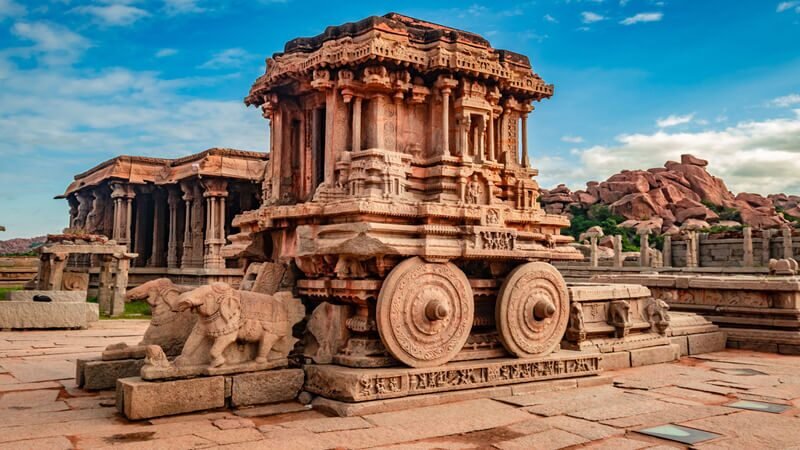
The story of Hampi is one of both triumph and tragedy. It is the tale of a city that rose to unparalleled heights under the leadership of visionary rulers, only to be laid low by the vicissitudes of history. This article explores the full spectrum of Hampi’s history—from its mythological origins and the founding of the Vijayanagara Empire to its golden age and eventual decline—drawing on a wealth of historical sources to paint a comprehensive picture of this once-great city.
The Mythological and Early Historical Background
Mythological Origins
The area around Hampi has been steeped in legend and myth for centuries, long before the rise of the Vijayanagara Empire. According to Hindu mythology, Hampi, known as Pampa-kshetra, is associated with the Ramayana, one of India’s most revered epics. The region is believed to be part of Kishkindha, the kingdom of the monkey gods, ruled by Sugriva, who was a key ally of Lord Rama in his quest to rescue his wife Sita from the demon king Ravana. It is said that Lord Rama and his brother Lakshmana met Hanuman, the mighty monkey god, in this region, marking the beginning of their alliance.
These mythological connections lent Hampi a deep spiritual significance, attracting pilgrims and ascetics long before it became the seat of political power. The area’s rocky terrain, with its dramatic boulders and serene river, provided a natural setting for meditation and religious observances, further enhancing its sacred status.
Early Settlements and Influence of the Chalukyas and Hoysalas
While the mythological narratives provided a spiritual foundation, the historical development of Hampi began with its association with various South Indian dynasties. Prior to the rise of the Vijayanagara Empire, the region was influenced by the Chalukyas of Badami (6th–8th centuries CE) and later by the Hoysalas (10th–14th centuries CE).
The Chalukyas, known for their contributions to Indian temple architecture, had a significant influence on the region, which is evident in some of the early temple structures found in and around Hampi. These early settlements laid the groundwork for what would later become one of India’s most important cities.
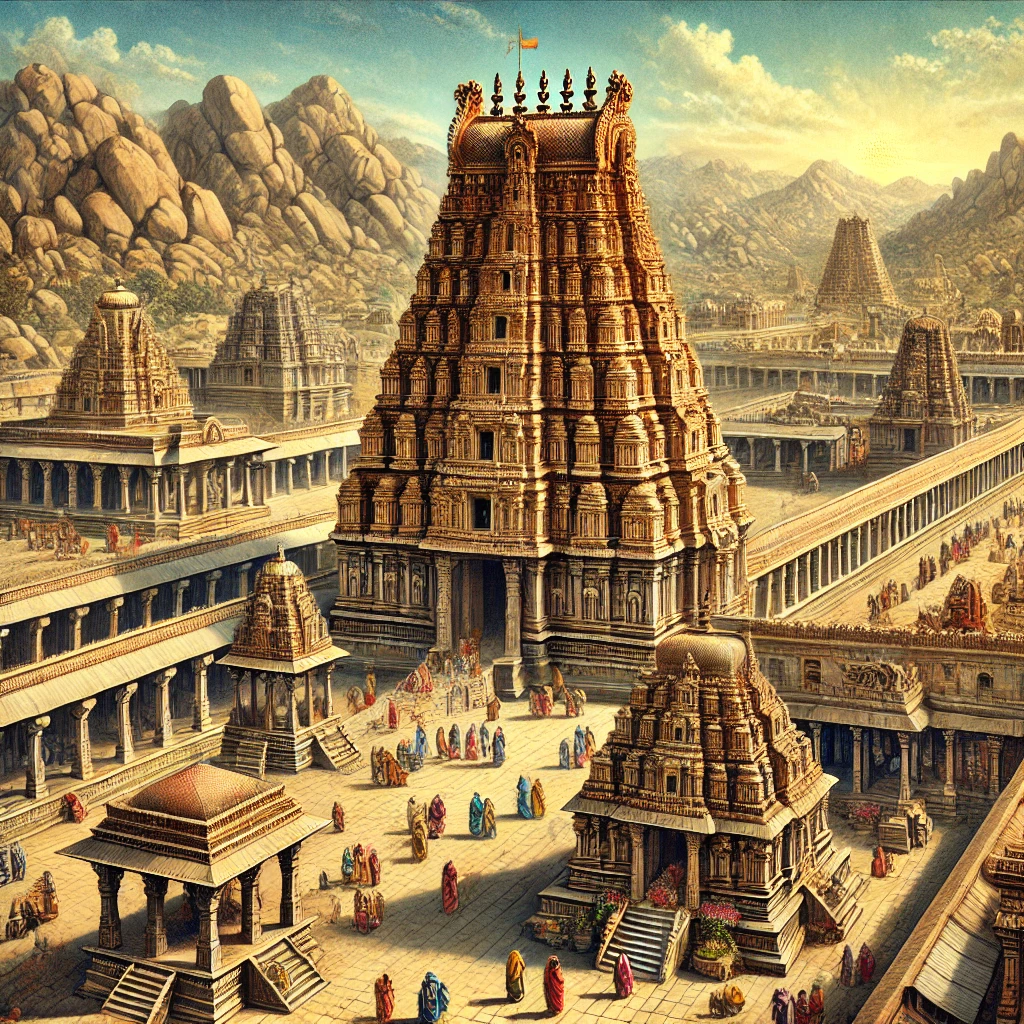
The Hoysalas, who succeeded the Chalukyas as the dominant power in Karnataka, also left their mark on the region. Their capital at Dwarasamudra (modern-day Halebidu) was not far from Hampi, and their architectural style influenced the early construction projects in the area. The Hoysalas were also instrumental in resisting the invasions of the Delhi Sultanate, a legacy that would be inherited by the founders of the Vijayanagara Empire.
The Founding of the Vijayanagara Empire
The Decline of the Hoysalas and the Rise of the Sangama Dynasty
The decline of the Hoysala Empire in the early 14th century created a power vacuum in South India. This period was marked by increasing incursions from the Delhi Sultanate, particularly under the rule of Sultan Alauddin Khalji and his general Malik Kafur, who launched a series of devastating raids into the Deccan region.
Amidst this backdrop of turmoil and fragmentation, the Sangama brothers, Harihara I and Bukka Raya I, emerged as key figures. Initially serving as commanders under the Hoysala king, they were captured by the forces of the Delhi Sultanate but eventually managed to escape and return to South India. According to some historical accounts, they were initially converted to Islam during their captivity but later reconverted to Hinduism under the guidance of the sage Vidyaranya, who would become their chief advisor.
In 1336, Harihara I and Bukka Raya I established the Vijayanagara Empire, with Hampi as its capital. The foundation of this new Hindu kingdom was a direct response to the threat posed by Muslim invasions from the north. The brothers were determined to create a strong, unified state in the South that could resist external threats and restore the region’s cultural and religious heritage.
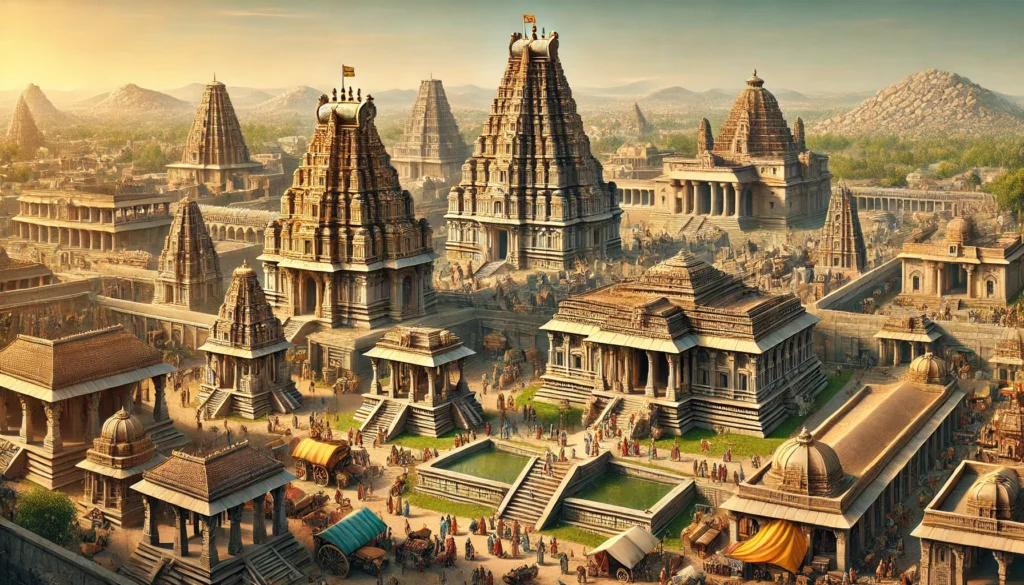
The Strategic Significance of Hampi
Hampi’s selection as the capital of the Vijayanagara Empire was no accident. The city’s location on the banks of the Tungabhadra River provided a natural defense against invaders, while its surrounding rocky hills served as formidable natural fortifications. These geographical features made Hampi an ideal military base from which the Sangama brothers could consolidate their power and launch campaigns to expand their territory.
Moreover, the region’s proximity to rich agricultural lands and mineral resources, particularly the iron and copper deposits in the nearby Bellary district, contributed to Hampi’s economic strength. The Tungabhadra River itself was a vital artery for trade and communication, linking the city to the rest of South India and beyond.
Under the leadership of Harihara I and Bukka Raya I, the Vijayanagara Empire quickly expanded its territory, incorporating much of present-day Karnataka, Andhra Pradesh, and Tamil Nadu. The early rulers focused on consolidating their power, building strong administrative structures, and fostering economic growth through trade and agriculture.
The Golden Age of Hampi and the Vijayanagara Empire
Expansion and Consolidation under the Sangama Dynasty
The early decades of the Vijayanagara Empire were characterized by territorial expansion and consolidation. Harihara I was succeeded by his brother Bukka Raya I, who continued to strengthen the empire. Bukka Raya I’s reign saw significant military successes, including victories over the Sultanate of Madurai and the expansion of the empire’s influence into the Tamil-speaking regions of South India.
Bukka Raya I was also a patron of religion and culture. He supported the construction of temples, the promotion of the Vedic tradition, and the patronage of scholars and poets. The king’s court became a center of intellectual and cultural activity, attracting scholars from across the subcontinent.
The consolidation of the empire continued under subsequent rulers of the Sangama dynasty, who faced ongoing challenges from both internal and external forces. The Deccan Sultanates to the north remained a constant threat, leading to frequent conflicts and shifting alliances. Despite these challenges, the Vijayanagara Empire continued to thrive, with Hampi at its heart.
The Tuluva Dynasty and the Reign of Krishnadevaraya
The true golden age of Hampi and the Vijayanagara Empire came with the rise of the Tuluva Dynasty in the late 15th century. The founder of this dynasty, Narasimha, usurped power from the declining Sangama rulers and established a new line of kings. However, it was under the leadership of Krishnadevaraya (1509–1529), the third ruler of the Tuluva dynasty, that the empire reached its zenith.
Krishnadevaraya is widely regarded as the greatest of all Vijayanagara rulers. His reign marked the peak of the empire’s military, economic, and cultural achievements. Krishnadevaraya expanded the empire’s territory to its maximum extent, encompassing the whole of South India and even parts of Sri Lanka. His military campaigns against the Gajapati Kingdom of Odisha, the Bahmani Sultanate, and other regional powers solidified his reputation as a formidable warrior king.
Under Krishnadevaraya, Hampi became one of the most prosperous cities in the world. The king embarked on a massive building program, commissioning the construction of temples, palaces, and public works that transformed the city into a showcase of Vijayanagara architecture. The Virupaksha Temple, which predates the Vijayanagara Empire but was greatly expanded during this period, became the spiritual center of the city, while the Vitthala Temple, with its famous stone chariot, exemplified the artistic and architectural achievements of the era.
Cultural Flourishing and Patronage of the Arts
Krishnadevaraya was not only a warrior but also a patron of the arts and literature. His court was home to some of the greatest poets, scholars, and artists of the time. The king himself was an accomplished writer and scholar, authoring the Telugu work Amuktamalyada, a poetic retelling of the story of Andal, a Tamil poet-saint. Krishnadevaraya’s court also saw the flourishing of Telugu and Kannada literature, with the Ashtadiggajas, a group of eight Telugu poets, receiving royal patronage.
Hampi during this period was a melting pot of cultures. The city attracted not only local artisans and intellectuals but also traders and diplomats from across the world. Persian, Portuguese, and Arabian merchants frequented Hampi’s bazaars, bringing with them goods, ideas, and technologies that further enriched the city’s cosmopolitan atmosphere. The markets of Hampi were filled with exotic goods—silks, spices, precious gems, and horses—making it a vital center of commerce in the Indian Ocean trade network.
The architectural style that developed in Hampi during this period was a unique blend of indigenous Dravidian elements and Indo-Islamic influences, reflecting the diverse cultural interactions of the time. The use of intricately carved pillars, grandiose gopurams (temple towers), and spacious courtyards became hallmarks of Vijayanagara architecture, setting the stage for future developments in South Indian temple design.
The Decline and Fall of Hampi
The Deccan Sultanates and the Battle of Talikota
Despite its prosperity and military strength, the Vijayanagara Empire faced growing challenges in the mid-16th century. The empire’s expansion had brought it into direct conflict with the Deccan Sultanates, a group of five Muslim-ruled states that had emerged from the fragmentation of the Bahmani Sultanate. These sultanates—Bijapur, Golconda, Ahmadnagar, Bidar, and Berar—saw the Vijayanagara Empire as a threat to their own ambitions and began to form alliances against it.
The tension between the Vijayanagara Empire and the Deccan Sultanates came to a head in 1565 at the Battle of Talikota, one of the most significant and tragic events in South Indian history. The battle was fought near the village of Talikota, north of Hampi, between the forces of the Vijayanagara Empire, led by Emperor Aliya Rama Raya, and the combined armies of the Sultanates.
Rama Raya, a regent who wielded significant power in the later years of the empire, had previously managed to play the sultanates against each other through diplomatic maneuvering. However, his overconfidence and the growing resentment among the sultanates led to the formation of a grand alliance against Vijayanagara. The battle itself was a disaster for the empire. Rama Raya was captured and beheaded on the battlefield, and his death led to a catastrophic collapse of morale among the Vijayanagara forces.
The aftermath of the Battle of Talikota was devastating. The victorious sultanates marched on Hampi, looting and destroying the city in an orgy of violence and revenge. The temples and palaces that had once been the pride of the empire were reduced to rubble, their treasures carried away, and their structures defaced. The city, which had been one of the richest and most vibrant in the world, was left in ruins.
The Aftermath and Abandonment of Hampi
The destruction of Hampi marked the effective end of the Vijayanagara Empire as a major power. Although remnants of the empire survived for a few more decades, the capital was moved to Penukonda, and the empire’s influence rapidly waned. Hampi itself was gradually abandoned as the surviving population fled, leaving the city to the ravages of time and nature.
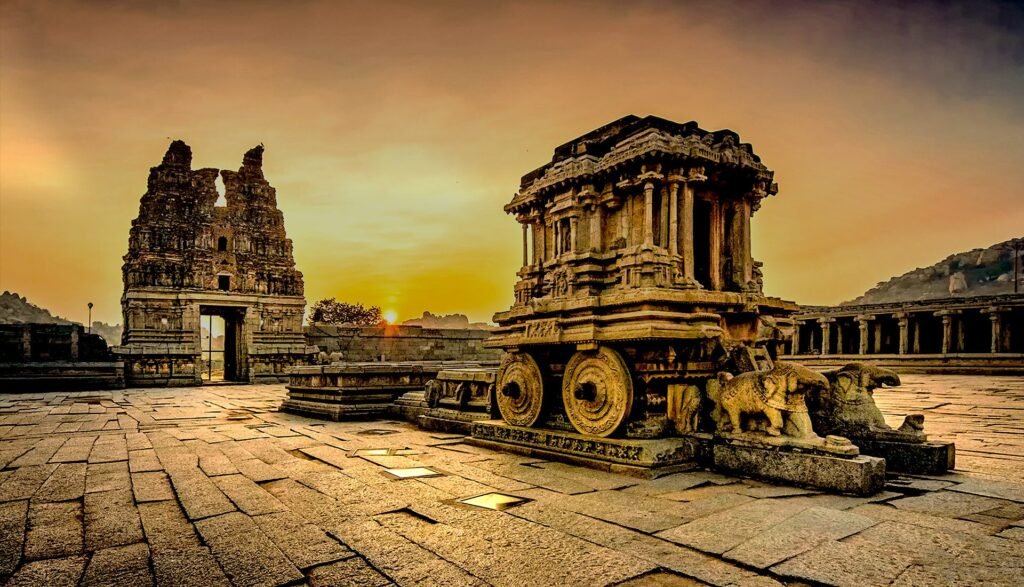
In the centuries that followed, Hampi’s ruins were largely forgotten, overgrown by vegetation and eroded by the elements. The city’s grandeur, once the marvel of travelers and merchants, became a distant memory, preserved only in the accounts of those who had witnessed it in its glory days.
Rediscovery and Legacy of Hampi
European Accounts and Rediscovery
The ruins of Hampi remained largely unknown to the outside world until the early 19th century when European travelers and archaeologists began to explore the site. British antiquarians like Colonel Colin Mackenzie, who was the first Surveyor General of India, played a crucial role in documenting and mapping the ruins of Hampi. His detailed surveys and drawings helped bring the site to the attention of the broader scholarly community and sparked interest in the study of Vijayanagara history.
Throughout the 19th and 20th centuries, archaeological excavations at Hampi uncovered a wealth of artifacts and structures, shedding new light on the city’s past. The ruins revealed the scale and sophistication of Vijayanagara architecture, with its intricate carvings, grand temples, and advanced water management systems. These discoveries have provided valuable insights into the daily life, religion, and culture of the people who once inhabited this great city.
Hampi as a UNESCO World Heritage Site
In 1986, the ruins of Hampi were designated as a UNESCO World Heritage Site, recognizing their global significance as a cultural and historical landmark. The site, spread over 4,100 hectares, includes over 1,600 surviving monuments, including temples, palaces, fortifications, water tanks, and markets. These structures, though in ruins, continue to inspire awe and admiration for the architectural and artistic achievements of the Vijayanagara Empire.
Efforts to preserve and restore Hampi have been ongoing, with both Indian and international organizations working to protect the site from further degradation. The Archaeological Survey of India (ASI) has been instrumental in these efforts, conducting conservation work and promoting the site as a major tourist destination.
Hampi today is not only a site of historical importance but also a place of living cultural heritage. The annual Hampi Utsav, a cultural festival held in the ruins, celebrates the art, music, and dance of the Vijayanagara period, keeping the spirit of the city alive. Pilgrims continue to visit the Virupaksha Temple, which remains an active site of worship, just as it has been for centuries.
Legacy of Hampi
The history of Hampi is a story of human achievement and the impermanence of even the greatest of civilizations. From its mythological origins and rise as the capital of the Vijayanagara Empire to its golden age under Krishnadevaraya and its eventual destruction, Hampi’s story reflects the broader currents of South Indian history.
Today, the ruins of Hampi stand as a poignant reminder of the city’s past glory and the vibrant culture that once thrived there. They are a testament to the resilience of India’s cultural heritage, which continues to inspire and inform the present. As we explore the remnants of this once-great city, we are reminded of the impermanence of human endeavors and the enduring power of art, architecture, and history to transcend the ages.
Bibliography
- Fritz, John M., and George Michell. Hampi: Vijayanagara. Mumbai: Marg Publications, 2001.
- Michell, George. Architecture and Art of Southern India: Vijayanagara and the Successor States. Cambridge: Cambridge University Press, 1995.
- Stein, Burton. Vijayanagara. Cambridge: Cambridge University Press, 1989.
- Verghese, Anila. Religious Traditions at Vijayanagara: As Revealed Through Its Monuments. New Delhi: Manohar Publishers & Distributors, 1995.
- Fritz, John M., and George Michell. “Interpreting the Layout of Vijayanagara.” World Archaeology 27, no. 3 (1996): 341-358.
- Seshan, Radhika. Trade and Politics on the Coromandel Coast: Seventeenth and Early Eighteenth Centuries. New Delhi: Primus Books, 2012.
- Briggs, George W. The Religious Life of India: The Religion of the Hindus. New Delhi: Ess Ess Publications, 1973.
- Ramaswamy, Vijaya. Vijayanagara: Visualizing Empire. New Delhi: Oxford University Press, 2008.
- Ludden, David. An Agrarian History of South Asia. Cambridge: Cambridge University Press, 1999.
- Srinivas, Smriti. Landscapes of Urban Memory: The Sacred and the Civic in India’s High-Tech City. Minneapolis: University of Minnesota Press, 2001.
- UNESCO. “Group of Monuments at Hampi.” UNESCO World Heritage Centre. Accessed August 10, 2024. https://whc.unesco.org/en/list/241/.
- Archaeological Survey of India. Hampi: An Archaeological Guide. New Delhi: ASI, 2010.

